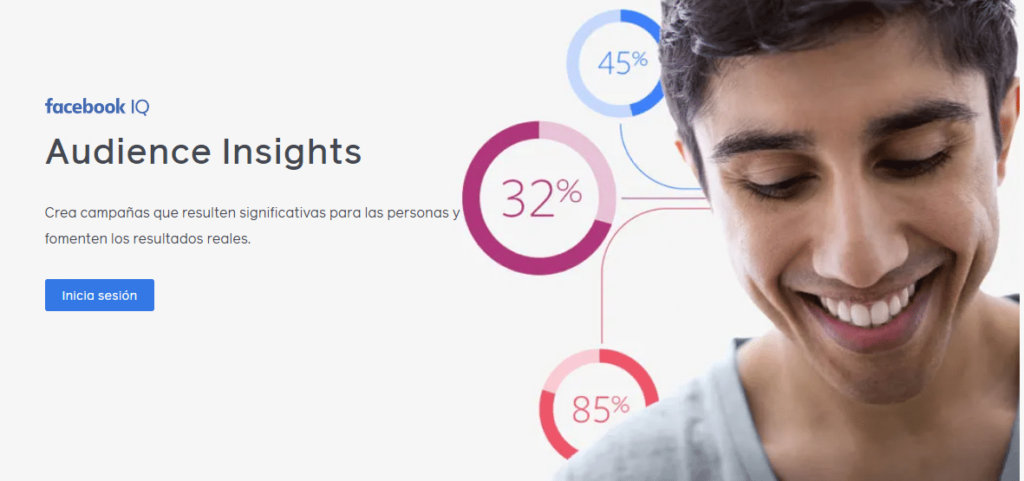The audience building is one of the fundamental pillars for the success of any company. digital marketing campaign. By targeting consumers correctly, brands can personalize their messages, maximize the impact of their marketing efforts and improve return on investment (ROI).
The development of well-defined audiences enables companies to focus on people who are genuinely interested in your products or serviceswhich significantly increases the chances of conversion.
This article will explore how audience building for effective marketing campaigns takes place, the tools available to optimize the process, and how Artificial Intelligence (AI) is revolutionizing audience targeting.
What is audience building in marketing?

Audience building is the process by which marketers identify and group consumers based on shared characteristics, behaviors or interests. This segmentation allows brands to customize their message to reach an audience that is more likely to interact and respond positively to the campaign.
Types of audiences in marketing
To understand how to create effective audiences, we must first understand the main types of audiences used in marketing:
- Audience demographicsIt is based on attributes such as age, gender, income, geographic location or educational level. It is one of the most common forms of segmentation in digital marketing campaigns.
- Psychographic audienceThis segmentation is based on consumers' interests, lifestyles, values and attitudes. It is ideal for tailoring campaigns to the personality or preferences of a specific group.
- Behavioral audienceConsumer behavior is considered here, such as purchase history, previous interactions with the brand or online activities (such as searches or ad clicks).
- Interest-based audiencesThese audiences are created according to consumers' areas of interest, which allows tailoring campaigns to people who have an affinity with a particular topic or product.
- Remarketing audienceThis refers to users who have already interacted with the brand at some point, such as those who visited the website or added products to the cart without finalizing the purchase. These audiences are excellent for lead recovery campaigns.
▶ You may be interested in: What is audience profiling and steps to do it. Examples
Steps to create effective audiences
1. Define campaign objectives
Before creating an audience, it is vital to define the objective of the marketing campaign. Is the objective to increase sales? To generate leads? To improve brand awareness? Defining the objective will help decide which user characteristics or behaviors should be prioritized when creating the audience.
For example, if the objective is direct product sales, the ideal audience may be comprised of consumers who have shown prior interest in similar products. On the other hand, if the objective is brand recognition, a broader audience based on general interests may be more appropriate.
2. Research and analyze the current audience.
Analyzing your existing customer database can provide valuable information about your target audience. What do your best customers have in common? Use this information to identify behavioral patterns, demographics, and preferences that can help create audience profiles.

To do this, it is essential to use data analysis tools such as Google Analytics o Facebook InsightsThese provide detailed data on user behavior and allow for the creation of more accurate segments.
3. Use audience segmentation tools
There are a number of platforms that allow marketers to efficiently create custom audiences. These tools include:
- Facebook Ads ManagerOne of the most widely used platforms for advanced audience targeting. It offers options to create audiences based on demographics, interests, behaviors, and allows you to upload contact lists or use pixels for remarketing.
- Google AdsOffers the possibility of segmenting audiences based on keywords, search interests, geographic location and user behavior.
- LinkedIn AdsIdeal for B2B campaigns, it allows you to create audiences based on professional data such as industry, position or the company where users work.
- CRM and email marketing platformsTools such as Mailchimp, Klaviyo o ActiveCampaign allow you to segment audiences based on past interactions, purchases and subscription data.
4. Create data-driven audiences
Data-driven segmentation is key to creating effective campaigns. Some of the most valuable sources of data are:
- Behavioral dataIncludes analysis of website interactions, past purchases, search history and mobile app usage. This data allows you to create audiences based on the actions users have already taken.
- CRM DataCRM (Customer Relationship Management) systems are a rich source of information about current and past customers, allowing you to segment audiences based on the history of interactions with the brand.
- Social network dataPlatforms such as Facebook or Instagram offer detailed metrics on users' interests and behaviors. With this data, it is possible to create highly personalized audiences for social media ads.
- Survey and form dataSurveys: Conducting surveys and collecting information directly from users is another effective way to learn more about your audience and be able to segment it more accurately.
5. Test, optimize and adjust audiences
Once the audiences are created and the campaign is launched, it is crucial to monitor their performance. Metrics such as CTR (Click-Through Rate), conversion rate, and engagement will help you evaluate if the audience created is the right one or if adjustments need to be made.
Advertising platforms allow for A/B testing, which allows you to test different audiences with similar ads and determine which one generates the best results. As campaigns progress, it is essential to optimize and adjust audiences to ensure the best possible performance.
Artificial Intelligence and Audience Creation

The Artificial Intelligence (AI) has transformed the audience building process in digital marketing.making targeting much more accurate and effective. AI-powered platforms can analyze large volumes of data in real time, identify complex behavioral patterns and personalize marketing campaigns automatically.
Benefits of using AI in audience targeting
1. Customization to scale
With AI, companies can create highly personalized campaigns for millions of users at the same time. Advanced algorithms can analyze data in real time and adjust ads to suit each user's individual preferences and behaviors.
2. Automatic campaign optimization
AI allows campaigns to automatically optimize based on audience behavior. If a particular audience is not performing well, AI can adjust targeting or even change the bidding strategy in real time to maximize return.
3. Predictive analytics
One of the biggest benefits of AI is its predictive analytics capabilities. By studying user behavior, AI can predict which users are most likely to convert and adjust campaigns to target them.
4. Dynamic segmentation
AI allows you to create dynamic audiences that automatically adjust as users' behaviors and preferences change. This means that there is no need to manually update audience lists, as AI does this in real time.
AI tools for audience building
- Google Analytics with AIGoogle uses machine learning to provide automatic insights on audience behaviors and recommendations on how to improve campaigns.
- Facebook Lookalike AudiencesUses AI algorithms to find similar audiences to your current customers, helping you reach new people with similar characteristics and behaviors.

Telco data for marketing and audience profiling with AI
In the digital age, every interaction counts. The platform for ENIGMIA transforms data into effective actions, offering retrospective analysis and insights in real time. We connect 30% of the Spanish population through 16 million mobile lines and 5 million households, analyzing more than 5,000 million daily navigations. We enrich the data with information from the electoral roll and INE to give you a comprehensive view of human behavior in Spain.
Conclusion
Audience creation is a fundamental process for the success of digital marketing campaigns. Through precise segmentation, the use of advanced tools and the support of Artificial Intelligence, it is possible to significantly improve campaign performance and maximize ROI. Companies that adopt these practices and technologies will be better positioned to deliver more effective, personalized and customer-focused campaigns.




